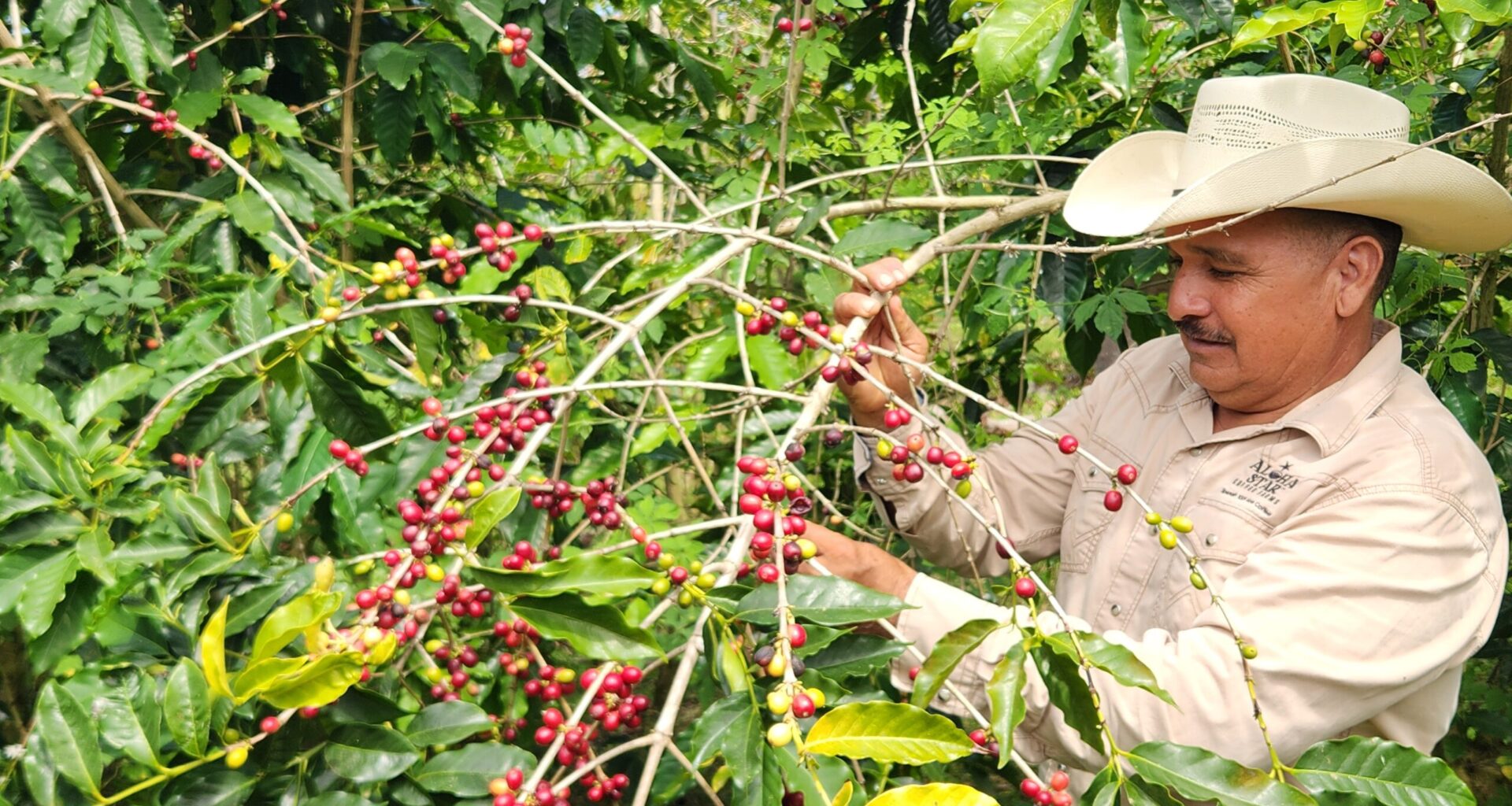The farmer walked between the lines of coffee trees, their branches heavy with bright red, yellow and green cherries glimmering through emerald green leaves.
“Look, every single tree is full,” said Berta Miranda, co-founder of Miranda’s Farms, in Hawaiʻi island’s Kaʻū coffee district, spread along Mauna Loa’s southern flanks. “It’s so gorgeous.”
In the same breath, Miranda’s voice was overtaken by unease and frustration — by the uncertainty gripping the Big Island’s coffee industry amid a nationwide immigration crackdown that is applying near constant pressure on its farmers and workers alike.
“We’re so worried about the pickers because we’re not going to have enough people,” she said. “We could lose a lot of coffee. They are scared.”
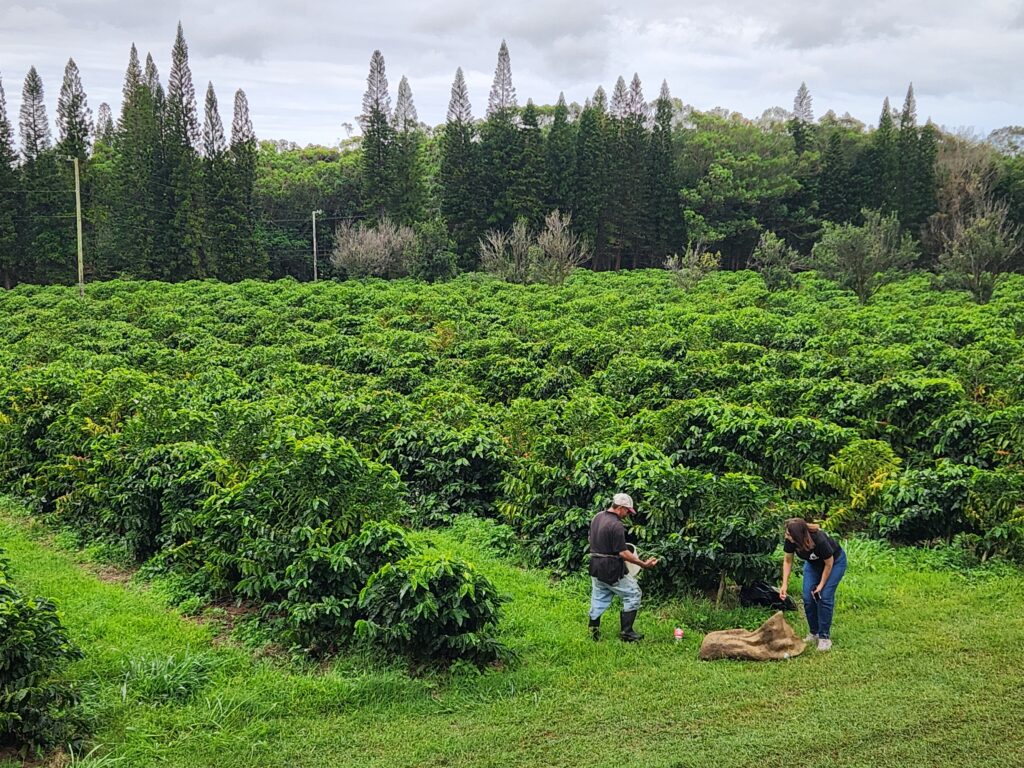 Berta Miranda, co-founder of Miranda’s Farms, and Miguel Madrid, one of her employees, at a coffee farm in South Point on Hawaiʻi island. (Jeremy Hay/Civil Beat/2025)
Berta Miranda, co-founder of Miranda’s Farms, and Miguel Madrid, one of her employees, at a coffee farm in South Point on Hawaiʻi island. (Jeremy Hay/Civil Beat/2025)
More than 100 coffee farm workers from along the island’s southern coast have been arrested and deported, according to community members. Some have fled the country. Others are refusing to travel to Hawaiʻi for the jobs they have shown up for year after year, even if they have legal residency status and work permits, such is the apprehension sowed by months of raids by federal Immigration and Naturalization Service agents.
“We’re seeing individuals who are being ripped out of our community,” said Rep. Jeanne Kapela, a state legislator whose district includes the Kaʻū coffee growing region. “There’s a lot of fear that breeds within that.”
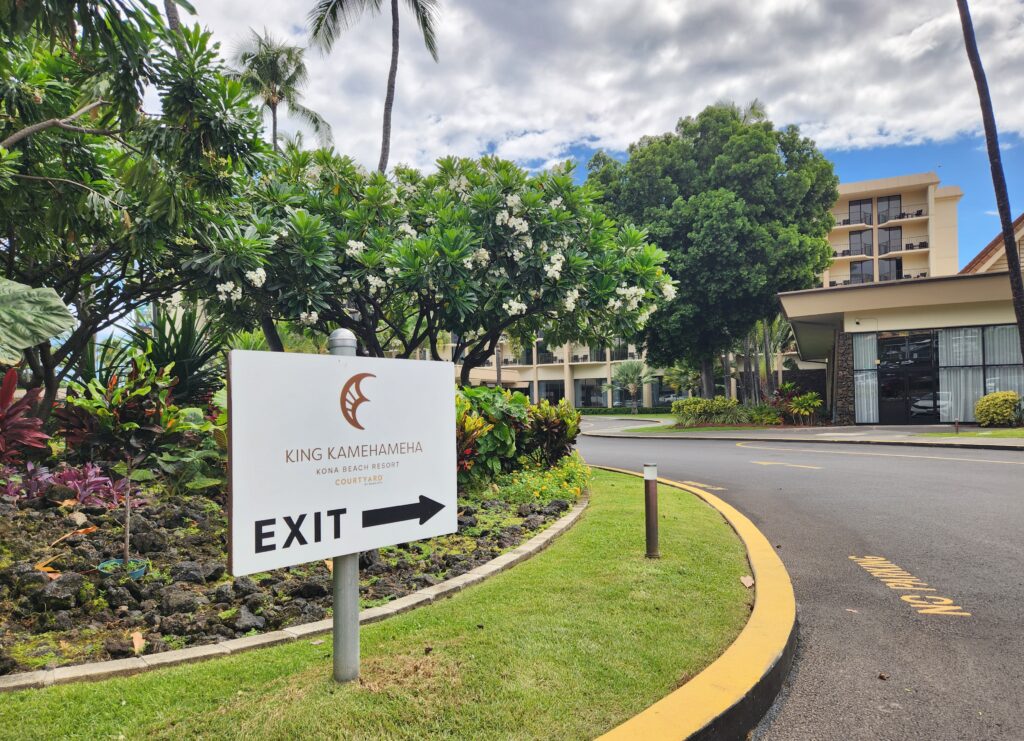 The King Kamehameha Kona Beach Resort in Kailua-Kona is reportedly where ICE agents reportedly stay when they are conducting immigration enforcement activities on Hawaiʻi island. (Jeremy Hay/Civil Beat/2025)
The King Kamehameha Kona Beach Resort in Kailua-Kona is reportedly where ICE agents reportedly stay when they are conducting immigration enforcement activities on Hawaiʻi island. (Jeremy Hay/Civil Beat/2025)
Miranda, whose harvest just started, usually employs about 20 expert pickers, each of whom she said can handpick 300 to 400 pounds of cherries a day. About half her normal crew is no longer available. Three pickers told her they were going back to Honduras; her daughter purchased their airline tickets. Others were arrested and deported, including her brother-in-law even though, she said, he has a work permit. Her sister, who also picks cherries, was arrested too. She is fighting deportation on the grounds that she was in the process of getting her residency and work authorization.
Miranda and other coffee farmers in Kaʻū — where the harvest generally runs later, often into February —and the Kona Coffee Belt, where picking is completed earlier, are already estimating they will suffer crop losses of 20% to 30% this year.
A Bumper Crop
As Miranda’s stroll through her farm showed, and as conversations with other farmers bear out, 2025 has brought a bumper coffee crop.
With the industry still reeling from repeated years of challenges with Coffee Leaf Rust and the Coffee Borer Beetle — respectively, a fungal disease and an insect that feeds on coffee beans — this year’s bountiful yield had been seen as a pathway out of the red for many.
Successive immigration raids have curtailed that prospect.
“This was the year to recover because we’re having a boom in production. We were very excited,” said Victoria Ledesma, who runs a Kona coffee farm but spoke on condition it not be named for fear of becoming an ICE target. “But with everything that’s going on, anxiety is really high across the industry. If people don’t get workers, will they lose again?”
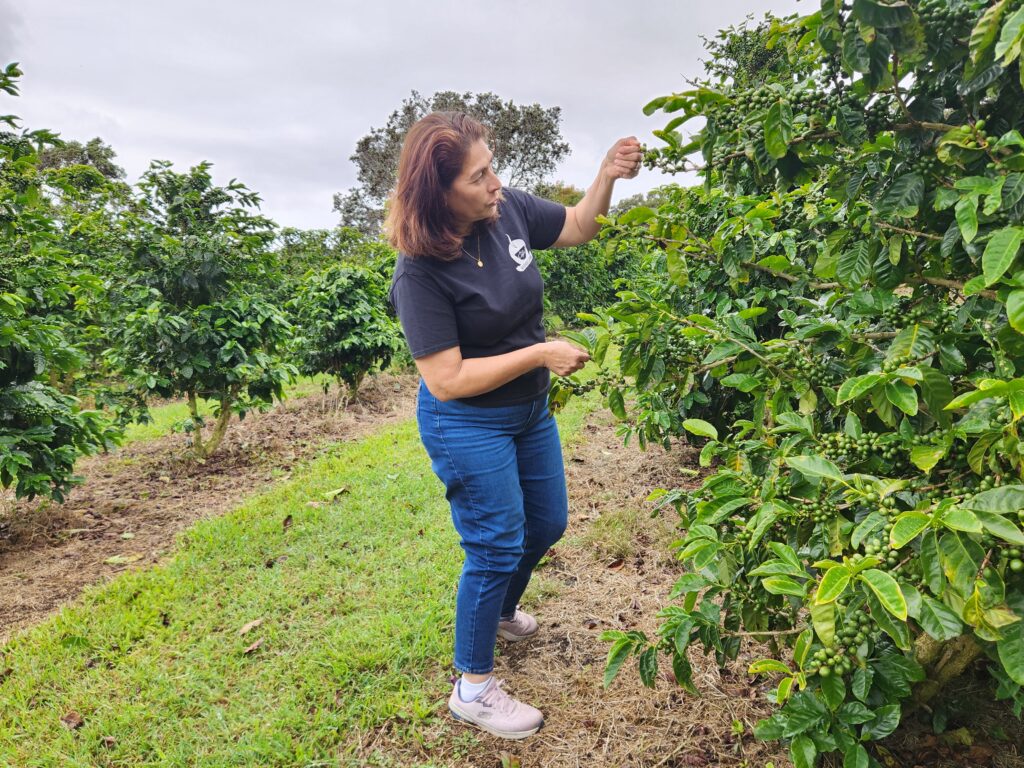 Berta Miranda, co-founder of Miranda’s Farms, inspects cherries in a field of coffee trees in South Point, in the Kaʻū district of Hawaiʻi island. (Jeremy Hay/Civil Beat/2025)
Berta Miranda, co-founder of Miranda’s Farms, inspects cherries in a field of coffee trees in South Point, in the Kaʻū district of Hawaiʻi island. (Jeremy Hay/Civil Beat/2025)
Hawaiʻi’s coffee industry was worth $48 million in 2023, the last year for which data is available. That made it the state’s third most valuable agricultural product behind seed crops such as corn, and cattle and calves.
The state estimates the Big Island has about 1,000 coffee farms, slightly more than half of Hawaiʻi’s total coffee acreage, and accounts for about 60% of the state’s total coffee production. The island’s coffee is considered the highest quality, and the name Kona is the industry’s signature brand.
However, the coffee economy is vulnerable. The Coffee Leaf Rust, which defoliates trees, and the Borer Beetle, which eats through beans, have not only impacted production volume in recent years but damaged the quality of cherries, which then sell for less.
And, even though significant crop loss through disease or labor shortage can push up prices in the short term, in the long term it is damaging in other ways, said economist Matthew Loke, agricultural development administrator at the Hawaiʻi Department of Agriculture and Biosecurity.
“When we have a decrease in supply … if existing buyers don’t get what they want they may go somewhere else” to buy their beans, Loke said. “And once someone turns to another source it’s challenging to get the business back.”
Turning To Raisins
At his Aloha Star coffee farm in South Kona, Armando Rodriguez estimated his shortage of workers will lead to $100,000 to $120,000 in losses as cherries go unpicked, turn to raisins and fall to the ground — as has started to happen already this season.
Two of his longtime seasonal employees, California residents who both hold green cards, chose not to come for this year’s harvest “because they are scared they will be revoked,” said Rodriguez, who founded Aloha Latinos. The group formed after the pandemic to connect Latino Big Island residents to resources. But it has taken on a role as a community advocate in the face of President Donald Trump’s immigration agenda, documenting Immigration and Customs Enforcement raids and supporting the families of those arrested.
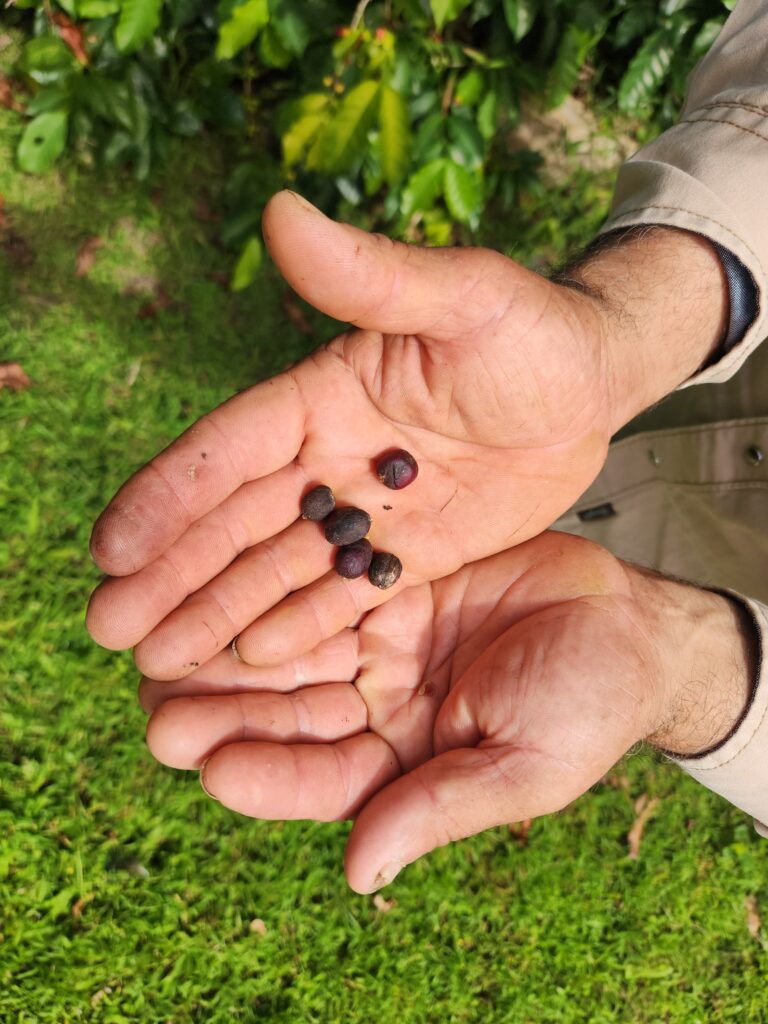 Farmer Armando Rodriguez holds coffee cherries that turned to raisins because they were not picked in time. (Jeremy Hay/Civil Beat/2025)
Farmer Armando Rodriguez holds coffee cherries that turned to raisins because they were not picked in time. (Jeremy Hay/Civil Beat/2025)
“ICE is a rock in your shoe, it affects every, every aspect of your life,” Rodriguez said. He said that 150 people have been arrested in the coffee region and deported, although not all were farm workers.
Farther north, in Kona, farmer Felipe Valdovinos said people from California and Washington whom he hires every harvest nixed traveling this year because of the recent implementation of the REAL ID requirements.
REAL IDs are federally approved driver’s licenses or identification cards; getting them requires multiple documents attesting to residency and legal status. Since May, they have been required for domestic air travel and people without one must present a passport or other approved documents to fly within the U.S.
That has scared people off, said Valdovinos, who farms 10 acres of coffee and normally hires about 10 workers for the season. Now, with less than half that number available, he and other small farmers are exchanging their labor, he said. He picks cherries for them, they do the same for him.
Even in conservative circles, the White House’s immigration enforcement strategy has raised concerns about impacts on the agricultural industry.
Vincent Smith is director of agricultural policy studies at the American Enterprise Institute and recently argued against farm subsidies included in the massive domestic policy bill that Trump won passage of in July, saying they “pander to special interest groups.”
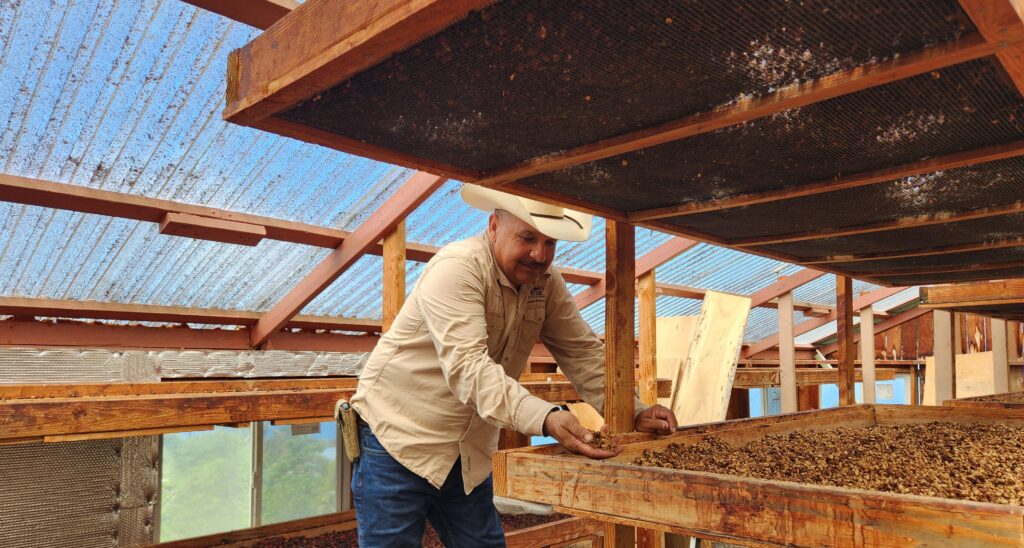 Coffee farmer Armando Rodriguez, owner of Aloha Star, in the facility he uses to dry his coffee beans. (Jeremy Hay/Civil Beat/2025)
Coffee farmer Armando Rodriguez, owner of Aloha Star, in the facility he uses to dry his coffee beans. (Jeremy Hay/Civil Beat/2025)
Smith called Trump’s campaign to deport millions of immigrants “an irrational policy,” extending well beyond the hardened criminals the administration claims to be targeting. He said it is hurting the nation’s agricultural sector by raising labor costs and decreasing production.
“Anyone who claims that this is not going to harm U.S. farmers, whether they’re running cattle in Arizona or in Hawaiʻi harvesting coffee, is astonishingly ill informed,” he said.
In June, Trump briefly called for a pause in immigration enforcement in certain industries, including on farms. But under pressure from his right-most flank, he quickly reversed course.
ICE did not respond to emailed questions about the impact of its immigration enforcement approach on agriculture, or about how many people it has arrested on the Big Island since Trump took office. At the start of May, ICE stopped providing details about where administrative arrests were made in Hawaiʻi, aside from those in correctional facilities.
‘We Don’t Know’
As farmers like Rodriguez lock farm gates they used to leave open, hoping to deter easy access by ICE agents, and enlist family members to join them in picking, workers watch friends and neighbors pack up and leave or go underground.
Miguel Madrid, a Honduran native, works for Miranda’s Farms, tending its coffee trees and picking cherries with a practiced touch, unerringly separating ripe fruit from those not yet ready, his hands nearly a blur.
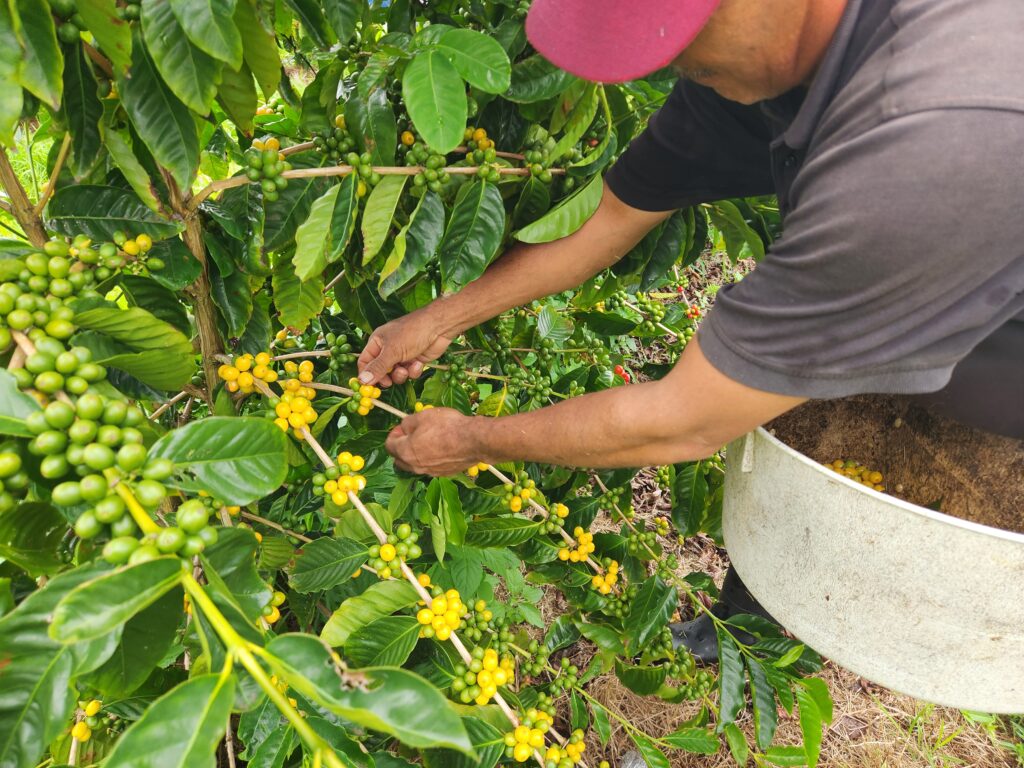 Miguel Madrid picks Miranda’s Farms’ yellow bourbon cherries as the coffee harvest gets underway (Jeremy Hay/Civil Beat/2025).
Miguel Madrid picks Miranda’s Farms’ yellow bourbon cherries as the coffee harvest gets underway (Jeremy Hay/Civil Beat/2025).
He has a temporary work authorization — reviewed by Civil Beat — that is good until January, but many pickers he knows did not and left the country of their own accord.
“They’re already gone,” he said.
ICE has even arrested people with work permits, he claimed. “They don’t ask questions, they just take you for nothing,” he said, speaking in Spanish.
In its emails to the ICE media team, Civil Beat asked about that allegation. No one responded.
Kapela said that immigration, already a defining feature of Hawaiʻi — where 18% of residents are immigrants, more than the national average — is a signature characteristic of the coffee-growing region.
“The reality is that it’s so deeply rooted within our communities, especially communities that run around agriculture and exist around agriculture as one of our main forms of economic movement,” she said.
It’s unclear what the state could do to support coffee farmers affected by the immigration crackdown, she said, although she has been speaking with other legislators, trying to educate them about the impacts.
“I don’t know how long we can be here. Maybe one day it’s better to go back to our country because it’s too much.”
Berta Miranda, coffee farm owner in Kaʻū
Instead, Kapela said, she and others are working with community members so they can be ready when ICE agents bang on their or their neighbor’s door, as Miranda said happened to her sister in early August.
They set up a phone tree of whom to call when someone is arrested. Prepare notarized documents to establish guardianship for children in the event their parents are taken. Try to arrange for more legal help for immigrants on the Big Island, where immigration attorneys are scarce.
“I wish I could say there’s this big grand master plan,” Kapela said. “But really it’s like small, small pieces of this puzzle that are going to, I think, help us get through it, at least find some stability in the next couple of years as we weather this federal administration.”
This ongoing series delves deep into what it would take for Hawai‘i to decrease its dependence on imported food and be better positioned to grow its own.
Meanwhile, those who remain, whether documented or not, mostly lay low.
“They don’t even go to the store,” Valdovinos said, “to ChoiceMART or Walmart, because they’re scared. They’re hiding until it ends, or it gets worse. We don’t know.”
It wears one down, Ledesma said.
“You’re not able to just live your identity freely. Now you’re watching how loud your music is. And if it’s Mexican music or if you look a certain way,” she said. “It’s been really hard to live that reality and to know that your entire community of people is being suppressed and not being able to have pride in their culture and in their identity.”
And in Kaʻū, Miranda — who fled a civil war in El Salvador for the U.S. in 1991 — wonders how long she should hang on.
“I always see the United States as the best country. I respect everybody from here,” she said. “I was living the dream, but now I’m so confused. I don’t know how long we can be here. Maybe one day it’s better to go back to our country because it’s too much. ICE doesn’t respect anybody.”
Civil Beat’s reporting on economic inequality is supported by the Hawaiʻi Community Foundation as part of its work to build equity for all through the CHANGE Framework; and by the Cooke Foundation. “Hawai‘i Grown” is funded in part by grants from the Stupski Foundation, Ulupono Fund at the Hawai‘i Community Foundation and the Frost Family Foundation.

Sign up for our FREE morning newsletter and face each day more informed.
Sign Up
Sorry. That’s an invalid e-mail.
Thanks! We’ll send you a confirmation e-mail shortly.
